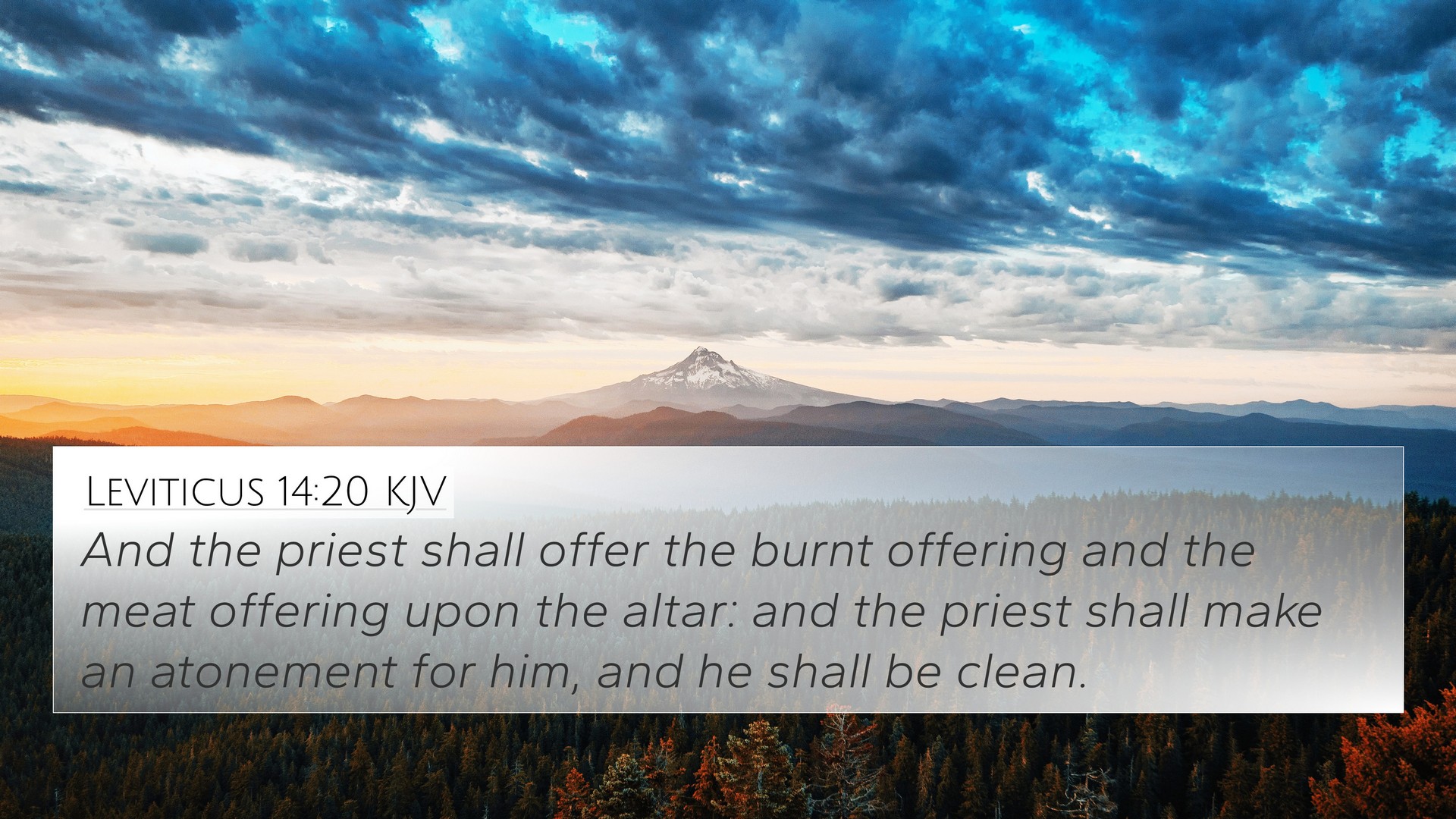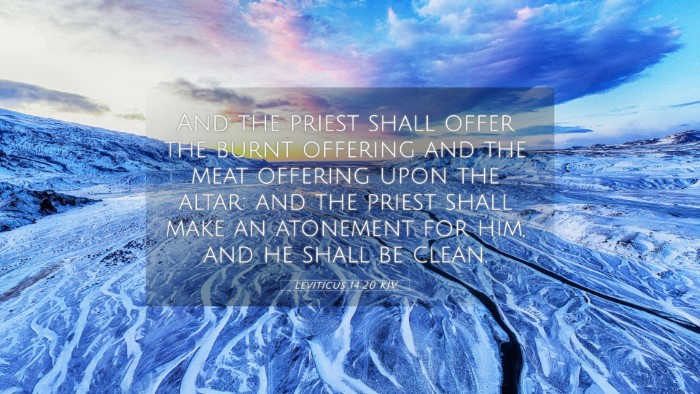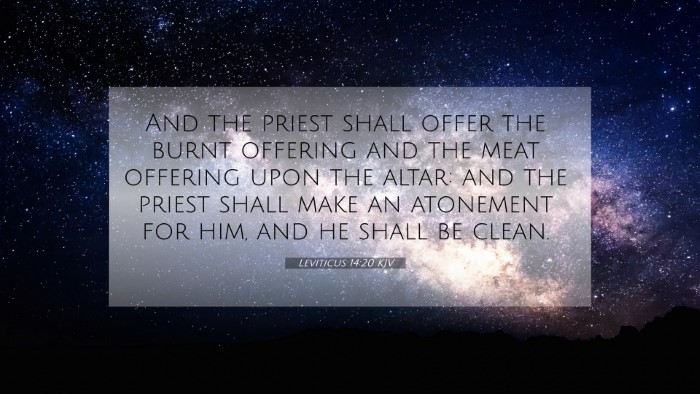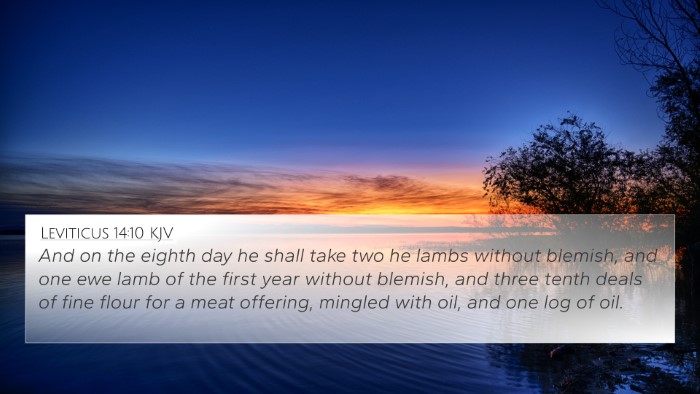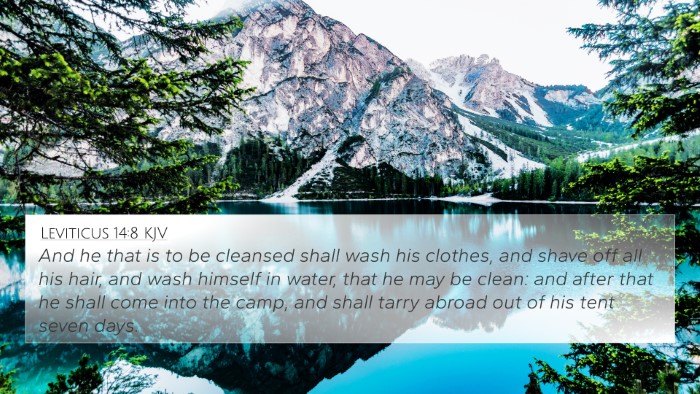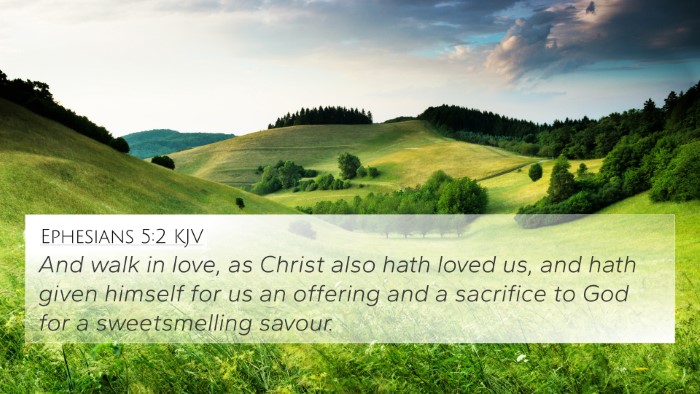Understanding Leviticus 14:20
Leviticus 14:20 states: "And the priest shall offer the burnt offering and the meal offering upon the altar: and the priest shall make an atonement for him, and he shall be clean." This verse is part of the law concerning the cleansing of a leper and highlights both the ritual requirements and spiritual significance associated with offerings and cleansing in the Old Testament.
Contextual Background
The chapter discusses the procedure for ceremonial cleansing of a person who has been healed from leprosy, specifically detailing the role of the priest. It emphasizes the importance of divine authority through the priest in matters of purification and atonement.
Insights from Public Domain Commentaries
- Matthew Henry: Henry points out that this ritual not only signifies physical healing but also represents spiritual restoration. The act of presenting offerings is central to recognizing God's mercy and the need for atonement.
- Albert Barnes: Barnes remarks on the symbolic meaning of offerings. He connects this verse to the concept of making atonement for sin, indicating that offerings serve as a means of reconciliation between the individual and God, thus highlighting the need for divine forgiveness.
- Adam Clarke: Clarke elaborates on the necessity of the burnt offering and the meal offering, noting that these gifts symbolize total devotion and reliance on God. He explains that this connection to sacrifice is fundamental in understanding the sacrificial system of the Israelites.
Thematic Analysis
The themes present in Leviticus 14:20 extend beyond ritual practices. The notions of atonement, purity, and restoration echo throughout Scripture, linking to various other passages.
Bible Verse Cross-References
Here are some relevant Bible verses that illuminate connections to Leviticus 14:20:
- Hebrews 9:22: "And almost all things are by the law purged with blood; and without shedding of blood is no remission." - This verse emphasizes the necessity of sacrifice for forgiveness.
- Isaiah 53:5: "But he was wounded for our transgressions, he was bruised for our iniquities: the chastisement of our peace was upon him; and with his stripes we are healed." - Here, the connection to physical and spiritual healing is established further.
- 1 John 1:7: "But if we walk in the light, as he is in the light, we have fellowship one with another, and the blood of Jesus Christ his Son cleanses us from all sin." - This New Testament verse parallels the cleansing aspect articulated in Leviticus.
- Romans 12:1: "I beseech you therefore, brethren, by the mercies of God, that ye present your bodies a living sacrifice, holy, acceptable unto God, which is your reasonable service." - This invites believers to see themselves as sacrifices, reflecting the theme of offering.
- Psalms 51:7: "Purge me with hyssop, and I shall be clean: wash me, and I shall be whiter than snow." - A prayer of cleansing that resonates with the themes of purification and atonement.
- Matthew 8:2-3: The healing of the leper by Jesus illustrates the fulfillment of this cleansing practice, highlighting Jesus' authority to restore.
- John 1:29: "Behold the Lamb of God, which taketh away the sin of the world." - A significant statement that connects the sacrificial system of the Old Testament with the ultimate sacrifice of Christ.
Connections Between Bible Verses
The connections between Leviticus 14:20 and these other verses demonstrate a rich tapestry of themes woven throughout scripture. The narrative reveals a consistent emphasis on the need for atonement and divine grace, echoed through both the Old and New Testaments.
Tools for Bible Cross-Referencing
Using tools for Bible cross-referencing can provide deeper insights into understanding the Scriptures. Methods such as utilizing a Bible concordance or a Bible cross-reference guide can enhance one’s study of interconnected themes, bridging gaps between passages.
Conclusion
Leviticus 14:20 not only serves as a directive for the ancient Israelites but also presents timeless themes of atonement, cleansing, and the sacrificial system leading to Christ’s ultimate sacrifice. By engaging in comparative Bible verse analysis and exploring thematic Bible verse connections, believers can gain a profound understanding of God's redemptive plan throughout the entirety of Scripture.
Exploring Inter-Biblical Dialogue
Interpreting Biblical themes through cross-references reveals how God’s message resonates across various contexts, enriching the reader's understanding and faith.
